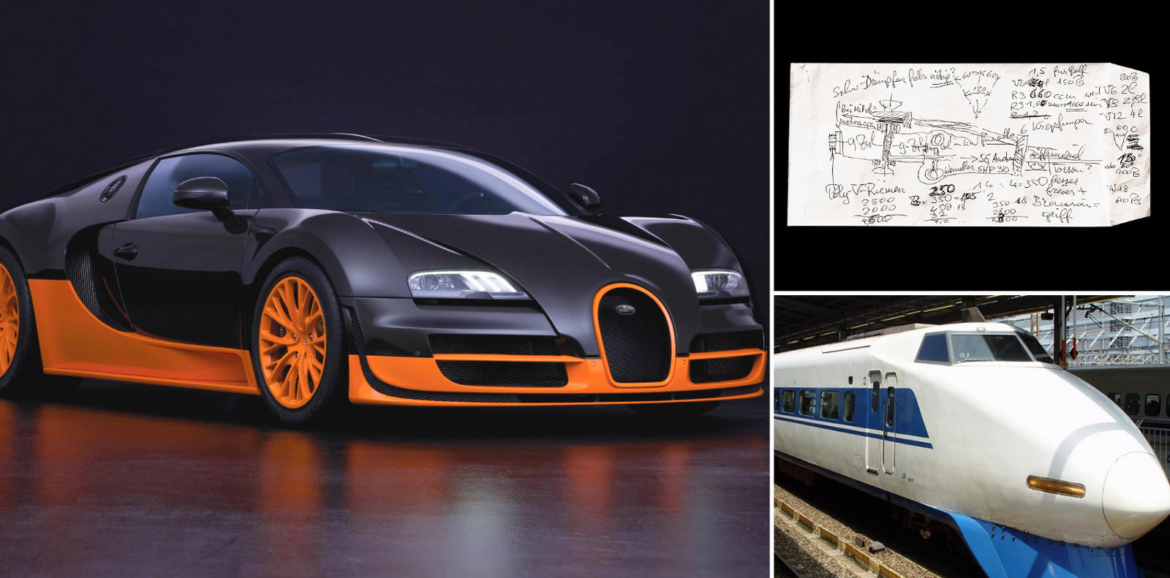On a high-speed bullet train racing between Tokyo and Nagoya in 1997, Ferdinand Piëch, then chairman of the Volkswagen Group, sat with a vision forming in his mind—a vision so bold that it defied the conventions of automotive engineering. Armed with nothing more than a pen and an envelope, he sketched what would become the foundation for one of the most audacious cars ever built: the Bugatti Veyron.
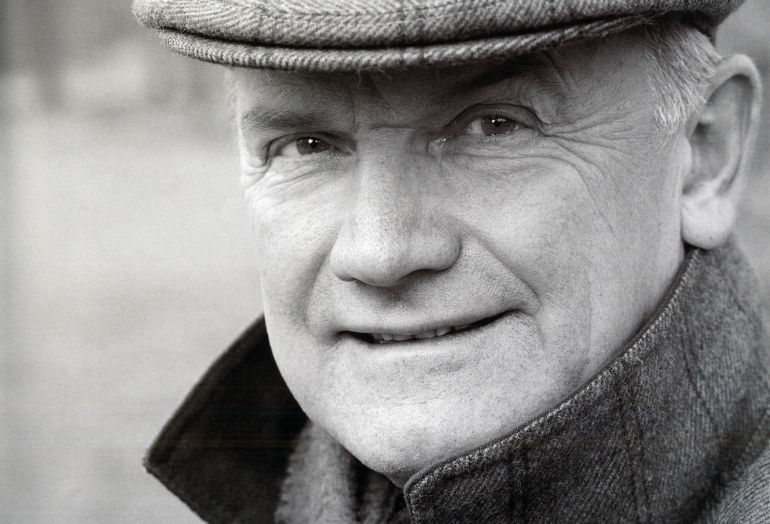
His concept was simple in words but monumental in ambition—an 18-cylinder engine, 1,000 horsepower, and a top speed exceeding 400 km/h (250 mph). It was a moment of clarity and daring that would eventually give birth to the world’s first true hypercar.
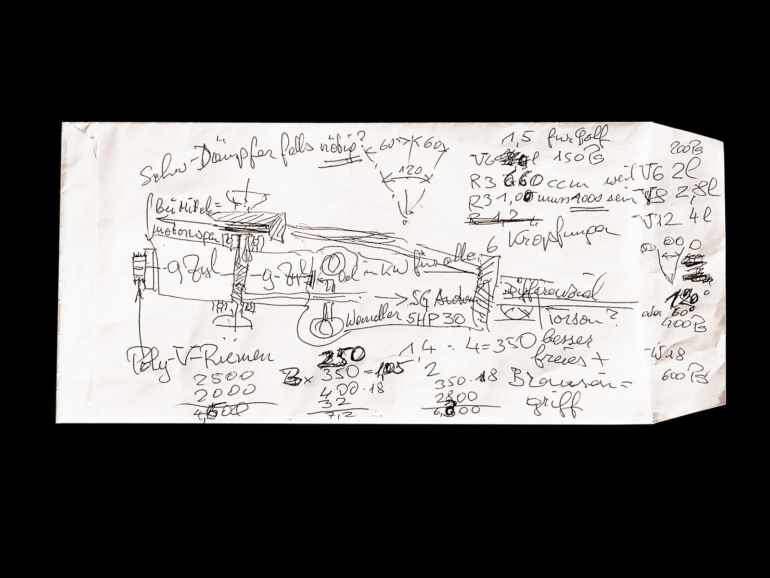
The back-of-the-envelope sketch wasn’t just idle doodling. Piëch was known for his uncompromising standards and a relentless drive for perfection. At that time, Volkswagen had recently acquired the rights to the dormant Bugatti marque—an iconic French brand with a heritage of elegance and performance but no presence in the modern era.

The decision to resurrect Bugatti wasn’t merely nostalgic; it was strategic. Piëch saw an opportunity to create a car so advanced, so powerful, and so extraordinary that it would stand alone at the pinnacle of automotive achievement.

The original concept was refined over a series of radical prototypes, starting with the EB 118 and EB 218 concept cars, eventually evolving into the EB 18/4 Veyron shown in 1999. By then, the idea had matured: the car would feature a W16 engine—essentially two narrow-angle V8s sharing a crankshaft—with four turbochargers.
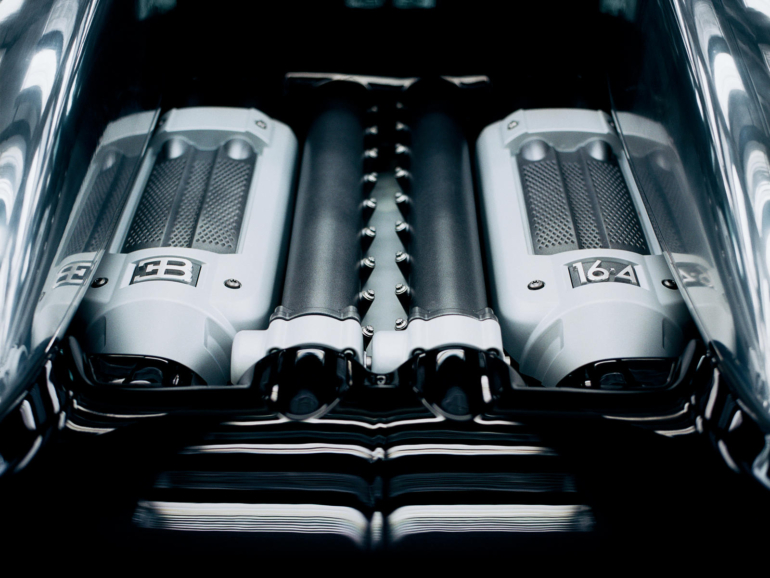
To achieve such immense speed safely and reliably, the engineering team had to develop entirely new systems: special tires that could withstand the centrifugal forces of 400 km/h, a seven-speed dual-clutch transmission capable of handling unprecedented torque, and a cooling system unlike anything seen before. Every component of the Veyron had to be invented from scratch.
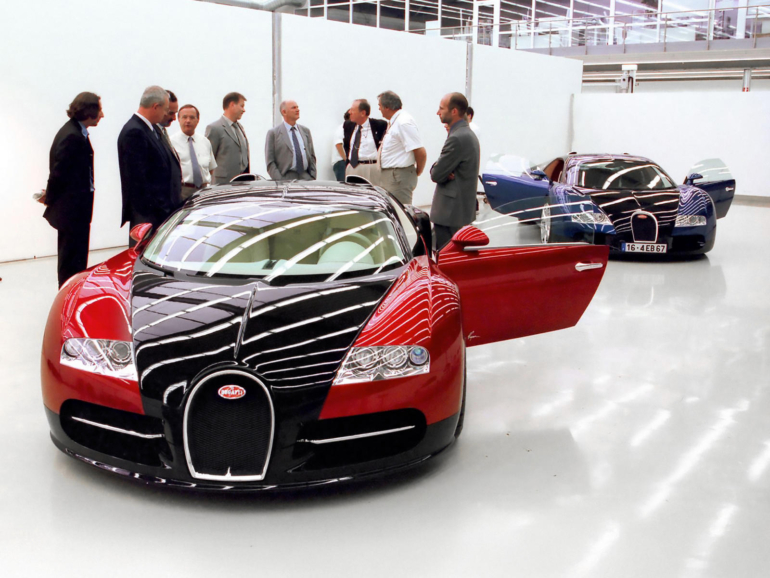
The result was unveiled in 2005 as the Bugatti Veyron 16.4. It wasn’t just fast—the fire-breathing monster obliterated records. With 1,001 horsepower and a top speed of 407 km/h (253 mph), it redefined the limits of road cars. Yet what made the Veyron truly revolutionary wasn’t just its numbers—it was its ability to deliver such mind-bending performance with the refinement of a luxury grand tourer. It didn’t compromise. It didn’t need to. It was the automotive equivalent of a moon landing.
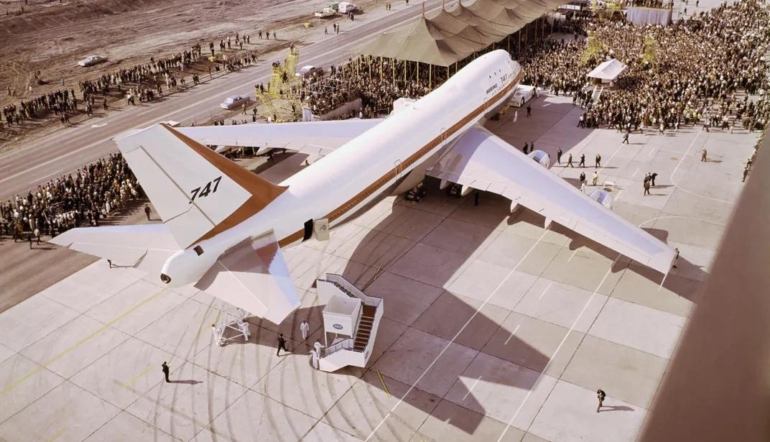
In many ways, the story of the Veyron’s genesis mirrors that of another engineering icon: the Boeing 747. Just like the Veyron, the 747 began as a napkin sketch—this time by Boeing engineer Joe Sutter. In the late 1960s, Sutter and his team were tasked with creating a passenger jet more than twice the size of any existing aircraft. Their vision, first scribbled during a meeting, led to the creation of the world’s first jumbo jet, a plane that revolutionized long-haul travel just as the Veyron would later redefine automotive performance. Both machines started as impossibilities and were willed into existence through sheer force of imagination and engineering brilliance.
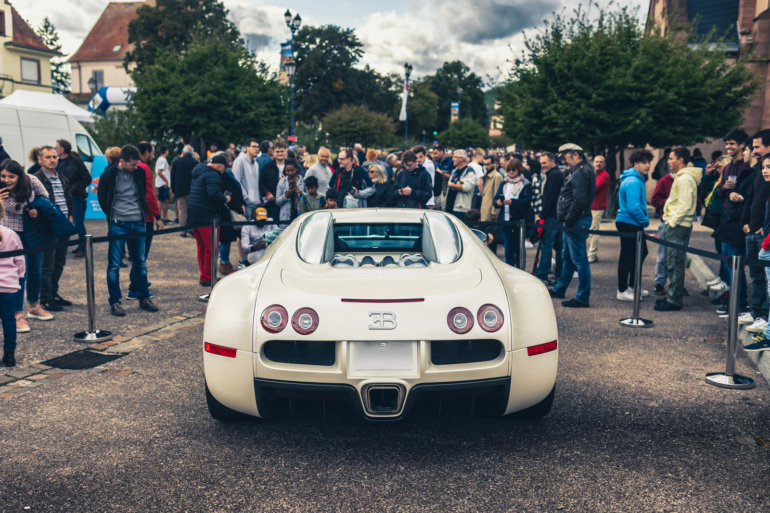
The Bugatti Veyron didn’t just break speed records—it broke the mold. It birthed an entirely new category of vehicle: the hypercar. Unlike traditional supercars, hypercars prioritize absolute performance and technological dominance above all else.

The Veyron set a precedent that would influence competitors for years to come, prompting brands like Koenigsegg, Pagani, and later, even Ferrari and McLaren, to enter an arms race of innovation and power. Without the Veyron, the hypercar landscape as we know it today simply wouldn’t exist.

From a single sketch on a paper napkin aboard a Japanese bullet train, the Bugatti Veyron emerged as a machine that not only defined an era—it created an entirely new one. Like the Boeing 747, it proved that with enough vision, engineering might, and refusal to compromise, even the wildest dreams drawn in ink can take flight.
